Effective Strategies to Repel Stink Bugs Naturally
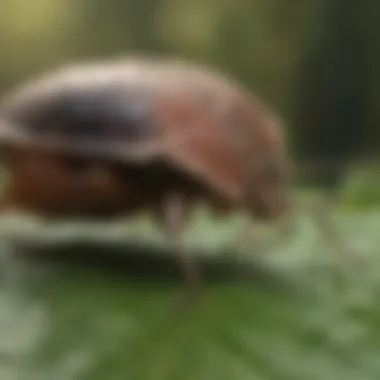
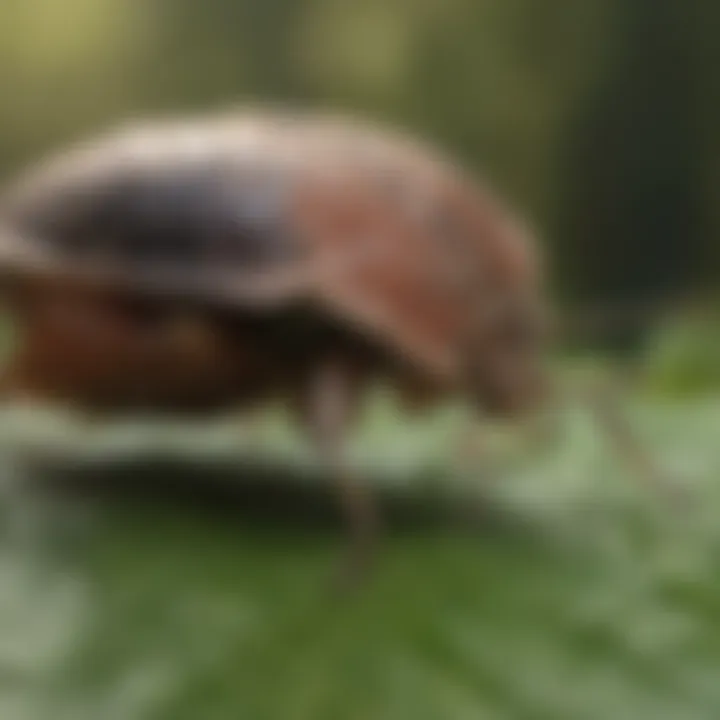
Intro
Stink bugs are prevalent pests that can invade homes and gardens, often leading to frustration for homeowners. Understanding what attracts them and, more importantly, how to repel them is crucial for maintaining a comfortable living space. This section explores the nature of these pests, outlines effective prevention techniques, and examines eco-friendly pest control solutions.
Understanding Pests
Definition of Pests
Pests are organisms that are harmful or detrimental to human activities, including agriculture, gardening, and sanitation. Stink bugs, for instance, fall under the category of agricultural pests as they damage crops, while also becoming a nuisance in homes as they seek shelter.
Importance of Pest Identification
Correctly identifying a pest is vital for implementing appropriate control measures. Stink bugs can often be mistaken for other bugs, leading to ineffective treatment strategies. Understanding their biology helps in recognizing their habits, breeding patterns, and seasonal invulnerability, which ultimately aids in formulating a more effective repellent strategy.
Prevention Techniques
Home and Garden Preventative Measures
Preventing stink bug infestations starts with safeguarding your home and garden. Here are a few measures:
- Sealing Entry Points: Check windows, doors, and any cracks or crevices in the walls. Utilizing caulk or weather stripping can effectively close off entryways.
- Maintaining Cleanliness: Regularly clean outdoor areas to eliminate debris where stink bugs can hide, such as heavy foliage or unmaintained gardens.
- Proper Plant Selection: Some plants attract stink bugs more than others. Identifying and removing these plants or replacing them with more resistant alternatives can be beneficial.
Seasonal Prevention Tips
The time of year can greatly influence stink bug behavior. During warmer months, they search for food and mates, while in fall, they look for places to shelter for winter. Seasonal strategies include:
- Spring: Monitor for signs of stink bugs and take preventative measures early.
- Summer: Keep a tidy garden and ensure no food sources are available.
- Fall: Seal potential entry points as they look for shelter.
- Winter: Regularly inspect and maintain organizing of stored items to avoid attracting pests.
Eco-Friendly Pest Control Solutions
Overview of Sustainable Practices
Many people are turning toward eco-friendly pest control due to concerns about chemical exposure. Sustainable practices emphasize natural remedies and less harmful methods.
- Biological Control: Introducing natural predators into the garden can help regulate stink bug populations. Birds, spiders, and some insects can act as effective guardians against these pests.
- Mechanical Control: Hand-picking stink bugs or using traps can control their numbers without chemicals.
Natural Remedies and Their Effectiveness
Several natural repellents might deter stink bugs. Some notable examples include:
- Essential Oils: Oils like mint, lavender, or neem are known for their insect-repelling properties. Spraying mixtures of these oils mixed with water around entry points can create a barrier.
- Homemade Soap Solutions: A simple solution of soap and water can suffocate stink bugs upon contact. Care must be taken to protect beneficial insects in the garden.
"Understanding pest behavior and biology is crucial for effective pest management."
Foreword to Stink Bugs
Stink bugs have become a common concern for many homeowners and gardeners. Their presence is often unwelcome, as they can cause damage to crops and plants. More than that, they are notorious for their unpleasant odor when threatened or crushed. Understanding stink bugs is crucial for effective pest management.
This section provides an overview of stink bugs, including their biology and patterns of infestation. By gaining insight into these pests, readers can develop better strategies for prevention and control.
Biological Overview
Stink bugs belong to the family Pentatomidae, which includes many species. These insects are characterized by their shield-like shape and can vary in color. The most common stink bug species in North America is the brown marmorated stink bug. Each species has distinct traits, but they all share specific biological characteristics.
Adult stink bugs typically measure about 1 to 2 centimeters long. They undergo a life cycle that includes the stages of egg, nymph, and adult. Stink bugs are herbivorous, feeding primarily on plant sap. This feeding behavior can lead to significant damage in agricultural settings, resulting in economic losses for farmers and affecting local ecosystems.
Understanding the biological makeup of stink bugs plays a key role in developing effective repellents. By knowing their life cycle and feeding habits, individuals can time their pest control measures more effectively.
Infestation Patterns
Infestation by stink bugs tends to follow certain patterns, often influenced by seasonal changes and environmental factors. During warmer months, these insects are more active and frequently found in gardens and crops. They are attracted to light and warmth, which is why homes can become infested when the weather turns cold, as they seek shelter.
Observing patterns in their behavior can help homeowners anticipate infestations. Signs of infestation include:
- Visible adults or nymphs on plants
- Damaged plants with yellowing leaves or wilting
- An increase in the number of stink bugs around windows or doors, particularly in late summer and autumn.
Proactive monitoring is essential. By understanding when and where stink bugs are most likely to appear, homeowners can implement prevention strategies before infestations escalate. Identifying these patterns is one of the key steps in maintaining a stink bug-free environment.
The Need for Repulsion
Stink bugs, specifically the Brown Marmorated Stink Bug, have become increasingly troublesome for homeowners and gardeners alike. Their capacity to invade homes and gardens during autumn underscores the importance of understanding effective repulsion methods. The need for repulsion arises from several factors, mainly revolving around the aesthetic and economic impacts of these pests.
Impact on Homes and Gardens
Stink bugs are not just irritating; they can cause significant damage to both homes and gardens. When they infiltrate a space, they do not just appear as unwelcomed guests. They can also leave behind a stale odor, which is unpleasant and difficult to eliminate. This scent stems from their natural defense mechanism.
In gardens, stink bugs can be particularly detrimental to crops. They feed on a range of plants, including tomatoes, peppers, and various fruits. These pests pierce plant tissues to suck out sap, leading to wilting, stunted growth, and even death of the plants. Homeowners who invest time and resources into their gardens find their efforts compromised by these pests.
"A comprehensive understanding of stink bug behavior is vital for implementing effective management strategies and ensuring the health of a household's environment."
Addressing stink bug infestations is essential for maintaining the aesthetics of living spaces. Cleanliness and overall ambiance suffer when homes are invaded by pests. Therefore, adopting strategies to repel these unwanted visitors has advantages beyond mere comfort.
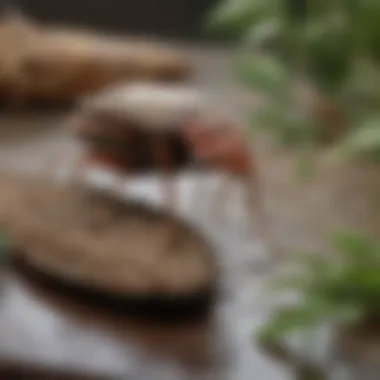
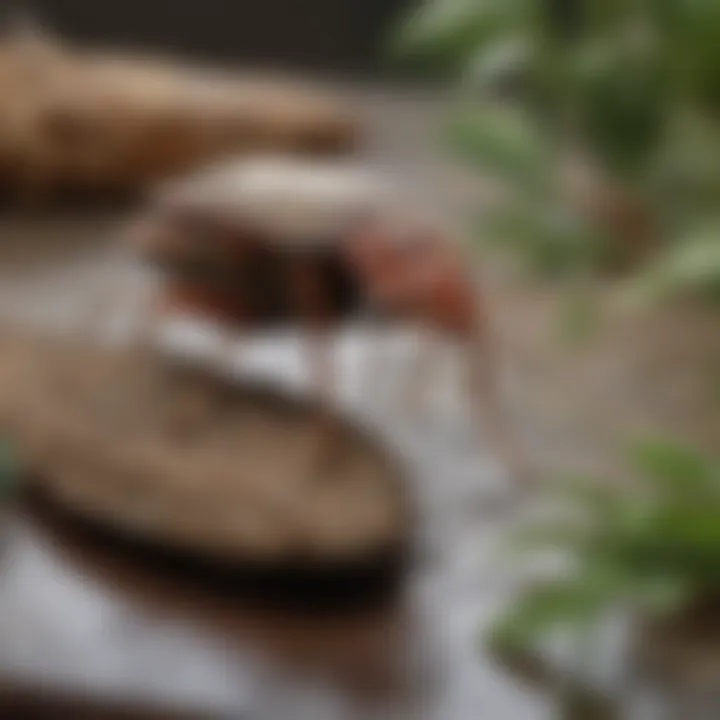
Economic Considerations
From an economic standpoint, the presence of stink bugs can bring about additional costs for homeowners. First, there are the immediate costs related to pest control solutions. Many homeowners end up spending money on traps, sprays, or professional services to manage infestations. These expenses can accumulate quickly, particularly if not dealt with promptly.
Furthermore, agricultural losses due to stink bugs can be substantial. As they damage crops, farmers may face reduced yields, impacting overall profits. The economic implications extend to consumers, as reduced crop yields can lead to higher prices at market.
Maintaining a stink-bug-free environment is not merely a pest issue; it has deeper economic ramifications. Investments in preventative measures often save money in the long-term by avoiding the larger costs of major infestations. Therefore, a strategic approach to repelling stink bugs is warranted for both immediate benefits and broader financial considerations.
Natural Repellents
Natural repellents play a significant role in the discussion around how to effectively manage stink bug populations. These solutions are often favored by homeowners and gardeners who seek eco-friendly alternatives to chemical methods. Natural repellents not only help in repelling these pests but also lower the risk of harm to beneficial insects and the environment. They can be easily implemented in various settings, from home interiors to garden landscapes, showcasing a practical approach to pest control.
Essential Oils
Essential oils represent a popular category of natural repellents, known for their strong scents and volatiles that can deter a variety of pests, including stink bugs.
Citronella
Citronella is an essential oil that has gained a reputation for its mosquito-repelling properties, yet it also proves effective against stink bugs. The key characteristic of citronella is its strong lemon-like fragrance, which is particularly off-putting to these insects. This oil is considered a beneficial choice for homeowners aiming to create an unpleasant environment for stink bugs.
One unique feature of citronella is its ability to mask scents that attract stink bugs, thus minimizing their presence. However, it is important to note that citronella may require frequent application to maintain its effectiveness, especially in outdoor settings where rain can dilute its potency.
Eucalyptus
Eucalyptus oil is another formidable player in the realm of natural repellents. The strong menthol aroma is what makes eucalyptus an appealing option for this article. Its contribution towards repelling stink bugs lies in its intense scent, which disrupts the pests’ sensory perception, making it harder for them to locate food and nesting sites.
A distinct advantage of eucalyptus oil is its longevity; it does not dissipate as quickly as other essential oils. However, some individuals may find the scent overpowering, making it a less ideal option for indoor applications.
Peppermint
Peppermint essential oil is quite popular due to its refreshing scent and versatility. As a natural repellent, peppermint oil proves effective against stink bugs by emitting a sharp smell that the bugs find repugnant. This feature sets peppermint apart as a beneficial solution for keeping stink bugs at bay while also providing a pleasant environment for homeowners.
One unique attribute of peppermint oil is its broad-spectrum efficacy, which means it can repel other pests as well. Nonetheless, peppermint oil may cause irritation in pets or children if used in large quantities, requiring careful application and consideration.
Plant-based Solutions
Plant-based solutions are another important aspect of natural repellents. These options come directly from the plant kingdom, providing natural aesthetics and effective pest control simultaneously.
Marigolds
Marigolds are known for their bright, cheerful blooms, yet they also have a function in pest management. The key characteristic of marigolds is their strong scent, which is believed to repel many garden pests, including stink bugs. Their role as a beneficial choice in gardens stems not only from their repelling qualities but also from their ability to attract beneficial insects like ladybugs.
A unique feature of marigolds is their easy cultivation; they thrive in various conditions, making them accessible for most gardeners. However, their effectiveness can diminish if not properly maintained, requiring regular care and attention.
Basil
Basil is another aromatic plant that contributes to the repelling of stink bugs. The key aspect of basil is the aromatic oils it contains, which can deter various pests. As such, planting basil in or around gardens can create a holistic pest management strategy.
One unique advantage of basil is its culinary use; it can be harvested and used in cooking, providing dual functionality. Yet, particularly strong pests may still find a way to bypass basil's protective aroma, necessitating supplementary measures for complete pest control.
Lavender
Lastly, lavender is a well-known plant not only for its fragrance but also for its pest-repelling capabilities. The soothing scent is beneficial in keeping stink bugs at bay, and many homeowners find it an aesthetically pleasing choice for gardens.
Lavender’s unique quality is its versatility; it can be used in sachets, essential oils, or simply allowed to grow in the garden. On the downside, it requires specific soil and climate conditions to thrive, which can be a challenge for some gardeners.
"Employing natural repellents helps create a safer environment for both your home and the surrounding ecosystem."
Overall, natural repellents are a critical aspect of managing stink bug populations effectively, offering a responsible approach that nourishes both home environments and gardens.
Chemical Repellents
Chemical repellents play a significant role in effectively managing stink bug populations. They offer powerful solutions for homeowners seeking to protect their living spaces and garden environments from these pests. The advantage of using chemical repellents lies in their ability to provide immediate results, which is often what people desire. When traditional methods may fail due to coverage issues or ineffective natural solutions, chemical options can be a reliable choice. However, it is essential to use these substances with care, considering potential impacts on the environment and human health.
Over-the-Counter Options
A wide variety of over-the-counter chemical repellents is available on the market. Many of these products include active ingredients specifically formulated to target stink bugs. Common options may contain pyrethroids, which disrupt the nervous systems of pests on contact. These products are often available in sprays, granules, or indoor foggers.
Homeowners should look for specific labels that mention stink bugs to ensure effectiveness. Always read and follow the instructions carefully. Using too much or applying it incorrectly can increase health risks and reduce the efficacy of the repellent. Factors such as wind direction and application time can influence how well these products work. For instance, applying a spray during windy conditions can result in less coverage.
"The correct application of chemical repellents ensures their effectiveness while minimizing potential harm to the environment and non-target species."
Professional Treatments
For those facing severe infestations or looking for a more comprehensive solution, professional pest control services can be invaluable. Technicians are trained to identify the best chemical repellents suited for specific environments. They may utilize industrial-grade products that are not typically available to consumers.
Professional treatments have specific advantages. They often employ integrated pest management techniques that combine chemical solutions with other strategies. Such combinations can provide long-lasting results while reducing the overreliance on chemical solutions alone. Additionally, trained professionals can assess the source of infestations and provide recommendations for preventative measures.
When choosing a pest control service, inquire about the products used and their safety profiles. Understanding the potential side effects of these chemicals is crucial.
Home Remedies
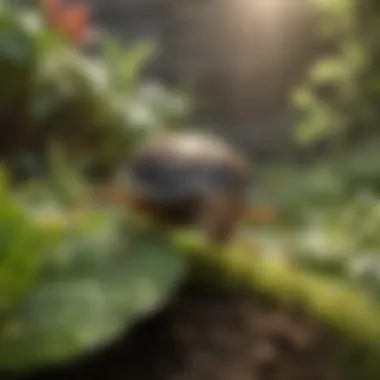

Home remedies provide a practical and accessible approach to repelling stink bugs. They present a valuable alternative to synthetic chemicals, appealing to those who seek eco-friendly solutions. Crafts made at home often rely on basic ingredients, making them economical and simple to implement. Many of these remedies are non-toxic, making them safer for households with children and pets.
Diatomaceous Earth
Diatomaceous Earth, or DE, is a fine powder made from fossilized algae. This natural product works effectively against various pests, including stink bugs. When applied to areas where stink bugs frequent, DE can cause significant harm to them without the use of harmful chemicals.
The way Diatomaceous Earth functions is simple. It has small, sharp particles that irritate and damage the exoskeleton of insects, causing dehydration. Here are some key points about using DE:
- Application: It can be sprinkled around potential entry points in your home, such as doors and windows. Timing is key; applying it during peak stink bug seasons increases efficacy.
- Safety: DE is safe for humans and pets when food-grade quality is used. However, avoiding inhalation is critical, as fine particles can irritate the respiratory system.
- Effectiveness: The effectiveness of DE lasts until it becomes damp, so reapplication after rain or heavy moisture is necessary.
"Diatomaceous Earth serves as a natural, eco-friendly repellent. It can control stink bugs effectively without releasing harmful substances into the environment."
Soap and Water Solutions
Soap and water solutions are another effective home remedy for controlling stink bug populations. This mixture is straightforward to create and highly efficient in physically suffocating stink bugs upon contact. The soap reduces surface tension, causing the insects to become immobilized in the solution.
To implement this method, consider the following steps:
- Preparation: Mix two tablespoons of liquid dish soap with a quart of water in a spray bottle. Ensure that the soap is biodegradable and free from harsh chemicals, promoting safety for surrounding plants and pets.
- Application: Spray directly onto stink bugs as you encounter them. It is best to apply this solution early in the morning or late in the evening when stink bug activity is at its highest.
- Effectiveness: This approach works best for localized infestations. For larger problems, it may require multiple applications.
This method not only addresses stink bugs but also other common pests, making it a versatile addition to pest management strategies in homes.
In summary, employing home remedies can significantly help manage stink bug issues. Both Diatomaceous Earth and soap solutions provide efficient alternatives that align with a desire for eco-friendly pest control.
Environmental Management
Effective environmental management is a critical aspect when addressing stink bug issues. Stink bugs tend to invade homes and gardens during certain seasons, seeking shelter and food. Understanding how to manage the environment around your property can play a significant role in preventing an infestation. Two primary elements stand out: home sealants and barriers, along with landscape maintenance.
First, the importance of preventing stink bugs can not be understated. By managing your environment well, you can significantly reduce their presence and thus protect your living space and garden. This approach offers a more sustainable solution compared to chemical treatments, which may have adverse effects on health and the ecosystem. Proper environmental management allows homeowners to create uninviting conditions for stink bugs while cultivating a healthy habitat for beneficial insects.
Home Sealants and Barriers
When it comes to home protection against pests, home sealants and barriers are highly effective, serving as the first line of defense. Sealants can prevent stink bugs from entering the home through tiny cracks and openings. Areas around windows, doors, and vents are crucial points that need attention.
- Inspect for Gaps: Take time to thoroughly check your property for any gaps or cracks. Stink bugs can squeeze through surprisingly small openings.
- Use Quality Sealants: Apply high-quality caulk or weather stripping to close up these gaps. Silicone-based or latex-based sealants work well for exterior applications.
- Install Door Sweeps: Equipping doors with sweeps can effectively block the entry of stink bugs. These are especially useful for sliding doors and exterior doors.
- Secure Screens: Ensuring that window screens are intact can help limit access points. Replace any damaged screens immediately.
"A proactive approach to sealing your home is pivotal in repelling stink bugs before they become a nuisance."
Implementing these methods not only protects against stink bugs but also enhances energy efficiency by maintaining indoor temperature.
Landscape Maintenance
Landscape maintenance plays a significant part in controlling stink bug populations around your vicinity. A well-maintained landscape can minimize the number of pests attracted to your home. Here are several strategies:
- Regular Clean-Up: Keep your garden free of debris. Fallen leaves and overgrown plants can provide shelter for stink bugs, making your garden a prime target for invasion.
- Choose Plants Wisely: Some plants can attract stink bugs. Avoid planting crops and ornamentals known to draw them, such as certain varieties of tomatoes or sunflowers. Instead, focus on using native plants that are less appealing to pests.
- Mulching: While mulch offers benefits for moisture retention and weed control, it can also create a habitat for stink bugs. Monitor your mulch for excessive thickness and consider turning it regularly.
- Trim Overgrown Plants: Keeping shrubs and trees pruned reduces hiding spots for stink bugs. It also allows for better air circulation, which can minimize humidity—an environment stink bugs prefer.
All these aspects of landscape maintenance contribute to an environment that is less conducive to stink bug occupancy. By creating a less inviting space, homeowners can reduce their chances of a potential infestation.
Timing and Seasonal Considerations
Understanding the timing and seasonal patterns of stink bugs is crucial for effective repellent use. Stink bugs have specific life cycles that vary with the seasons, influencing their behavior and the effectiveness of different repellents. Knowledge of these patterns aids homeowners in choosing the right time to implement preventive measures, optimizing results.
Stink bugs are most active during warmer months, particularly in late summer and fall, when they seek shelter as temperatures begin to drop. Recognizing this behavior allows you to apply repellents before an infestation occurs. If you wait until you see the bugs, it may be too late to prevent them from entering your home. Timing is not just about seasonal changes; it's also about the phases of stink bug activity.
Optimal Repellent Use
To maximize the efficacy of repellents, timing is essential. Applying natural or chemical repellents in early spring can deter emerging adults from invading homes. At this stage, you can use essential oils or plant-based solutions effectively.
- Early Spring: Focus on preventive measures. Use peppermint oil, for example, around windows and entry points to create a barrier.
- Mid-Summer: As stink bugs mature, maintain repellent application. Regularly reapply as infestations can be at their peak.
- Fall: Ensure thorough applications before they seek shelter. Chemical solutions should be considered at this stage due to the number of insects likely to invade.
Being proactive with timing can create a significant barrier against stink bugs, making it easier to manage their populations before they become a problem.
Understanding Stink Bug Behavior
Recognizing stink bug behavior enhances repellent strategies. Stink bugs are known for their migratory behavior, attracted to light and warmth. As fall approaches, they enter a phase known as diapause, where they seek warm spaces to survive the winter. Understanding this behavior helps target their vulnerabilities.
The following aspects of stink bug behavior are beneficial to consider:
- Attraction to Light: They are drawn to bright lights, especially in the evenings. Minimizing outdoor lighting can reduce their numbers nearby.
- Hibernation Habits: Knowing where they prefer to hide, like cracks in walls or under siding, allows homeowners to focus their efforts on sealing these areas before the colder months.
- Feeding Patterns: Stink bugs feed on a variety of plants, including fruits and vegetables. Maintaining your garden at specific times, such as before peak feeding seasons, can reduce their food sources and consequently their populations.
Understanding stink bug behavior enables homeowners to take more informed actions, contributing to an overall successful management plan.
In summary, the timing of repellent use and understanding the behavior of stink bugs are pivotal in effective pest management. By applying knowledge of their seasonal patterns, homeowners can reduce the chances of infestation and alleviate the associated nuisances.
The Role of Climate and Environment
Understanding the role of climate and environment is essential in discussing methods for repelling stink bugs. Various factors such as temperature, humidity, and local weather conditions influence stink bug behavior and their propensity to invade homes and gardens. Knowing these aspects can help homeowners devise effective strategies for managing these pests.
Stink bugs thrive in specific climatic conditions, and their life cycle depends greatly on environmental factors. Recognizing that these pests are sensitive to changes in their habitat allows homeowners to anticipate infestations and take proactive measures. The strategies considered here rely not only on the specific repellents used but also on a comprehensive understanding of how climate conditions foster or deter stink bug populations.
Thus, evaluating the role climate plays can provide valuable insight into effectively managing their presence.
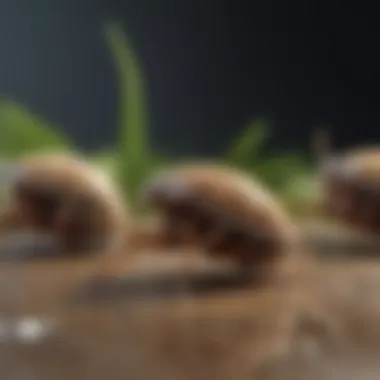
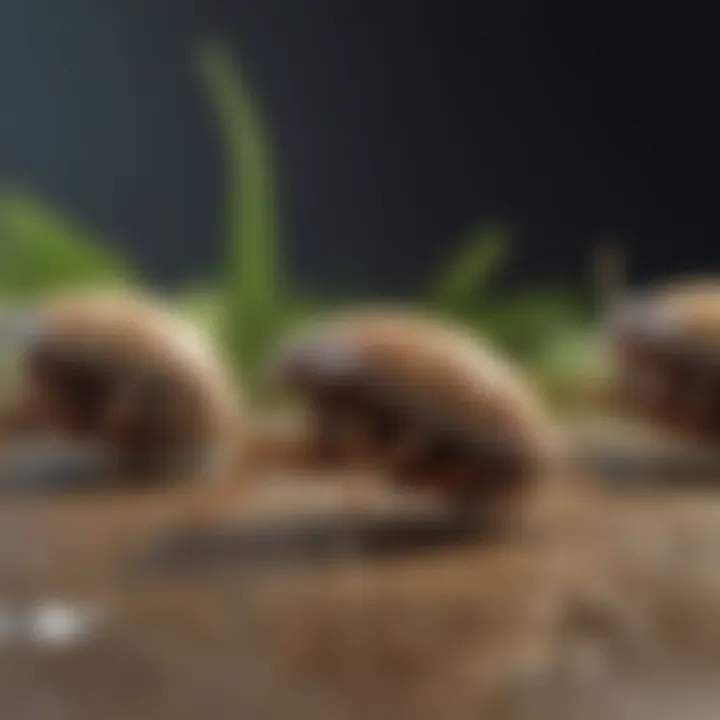
Temperature Influence
Temperature significantly affects stink bug activity and behavior. Stink bugs are exothermic, meaning they rely on external heat sources to regulate their body temperature. They become lethargic when temperatures drop, leading them to seek shelter in warmer environments. This is why they often invade homes during the colder months. If the temperature in your locality fluctuates, the stink bugs may adapt to these variations, increasing their chances of survival in areas where they shouldn't be present.
In warm temperatures, stink bugs are more active, feeding and mating more frequently. Homeowners should track local temperature changes to decide when to intensify repellent usage. Areas that consistently reach higher temperatures might see more robust stink bug populations, and understanding this correlation can aid in managing them effectively.
"Monitoring temperature shifts can be a powerful tool in stink bug management."
Humidity and Weather Patterns
Humidity and general weather patterns play a considerable role in stink bug activity. Stink bugs prefer humid environments, which facilitate their breeding and feeding cycles. High humidity levels can lead to increased infestations, as these conditions provide ideal habitats for them to thrive. Monitoring humidity in your surroundings can help homeowners adapt their pest management strategies accordingly.
Heavy rainfall or specific weather patterns can also influence stink bug behaviors. During extended periods of rain, they seek refuge inside structures that provide warmth and dryness. Homeowners should be aware of these patterns, particularly during the spring and fall when stink bugs are most active, adjusting their preventative measures during these seasons. Recognizing how both humidity and changes in weather patterns can affect stink bug behavior will greatly benefit ongoing pest management efforts.
Evaluating Effectiveness
Evaluating the effectiveness of repelling stink bugs is crucial for a few reasons. Firstly, knowing how well a repellent works helps homeowners make informed decisions about which methods to use. People seek solutions that will adequately address their stink bug problems without being overly harmful to the environment or their health. Moreover, the diversity of products available means that constantly assessing their outcomes can save time and effort, reducing the frustration of ineffective measures.
In a broader context, effective evaluation can lead to optimized pest management strategies. It allows homeowners and gardeners to adapt their approach, moving towards the most effective solutions available. By focusing on proven results, individuals can foster healthier environments in gardens and homes. This section examines how to measure the success of repellents and how adjustments can lead to better outcomes.
Measuring Success of Repellents
To measure the success of repellents against stink bugs, consider several elements. One effective method is counting the number of stink bugs in an area before and after applying a repellent. This quantitative method provides clear data demonstrating the effectiveness of a particular strategy.
Another relevant consideration is the duration of action of the repellent. How long does it repel stink bugs? Temporary solutions may require more frequent applications, while some products may offer extended protection.
It may also be useful to observe any behavioral changes in stink bugs when exposed to repellents. Are they actively avoiding treated areas or merely displaced without significant decline in population?
Involuntary changes in their activities can signal the repellent’s effectiveness. Here are actions to help measure the success of repellents:
- Monitor bug populations: Count and record the number of stink bugs captured or sighted.
- Observe changes over time: Track how the population fluctuates following repellent application.
- Document behavioral shifts: Notate differences in stink bug movement and response to treated areas.
These careful observations will provide a clearer picture of what works.
Adjusting Strategies
Adjusting strategies is a key part of effective pest management. No single solution will work universally against stink bugs. Given their adaptative nature, pests can show varying responses to different repellents based on environmental conditions and individual behavior.
When a repellent does not yield the expected results, it is essential to assess various factors. Perhaps the application was insufficient, or the environmental conditions were less than ideal. Alternatively, the selected repellent may not be strong enough against the specific stink bug species encountered.
Consider the following steps when adjusting strategies:
- Experiment with multiple repellents: Alternate between natural and chemical options to determine the most effective one.
- Review application techniques: Ensure that repellents are applied according to manufacturer guidelines. Factors like coverage area can greatly affect outcomes.
- Consider environmental factors: Adjustments may be needed based on changing weather patterns, such as humidity or temperature.
By employing an iterative process of evaluation and adjustment, homeowners can develop a strategy that is more resilient and effective against stink bug infestations.
Common Misconceptions
Understanding common misconceptions about stink bugs and their repulsion is key to effectively managing these nuisances. Often, the general public holds incorrect views that can lead to improper pest control strategies. By addressing these misconceptions, we can equip home and garden owners with the right knowledge to better combat stink bug populations. This section aims to clarify these myths and highlight the importance of using correct information for effective prevention and management strategies.
Debunking Myths
One prevalent myth is that all chemicals used in pest control are harmful and ineffective. However, there are many formulations, specifically designed for residential areas, that are both safe and efficient. Understanding the type of chemicals available can guide homeowners in making informed choices that protect their spaces without exposing their families or pets to undue risk.
Another myth surrounds the belief that stink bugs primarily invade during the spring and summer months. In reality, these pests often seek shelter in homes during fall, aiming to survive winter. Recognizing this behavior is important for planning preventative measures before infestations occur.
Additionally, some people think that removing food sources will deter stink bugs. While it is logical to limit attractants, stink bugs can also be drawn to areas merely for shelter, not just for food. Thus, relying only on removing food sources may not effectively prevent their invasion.
In summary, debunking these myths allows homeowners to approach stink bug management with a more nuanced understanding, leading to more strategic and effective control measures.
Understanding Stink Bug Behavior
A fundamental aspect of managing stink bugs is grasping their behavior. Stink bugs are attracted to warmth and light, which explains why they invade homes seeking refuge from colder temperatures. They are particularly drawn to light at night, making porch lights and windows significant points of attraction.
Moreover, stink bugs possess a unique odor when threatened or crushed. This odor serves as a defense mechanism and can lead to further infestations if not handled carefully. Many individuals mistakenly believe that this odor means they are no longer a threat once it's been detected.
When it comes to their life cycle, stink bugs lay eggs primarily during warm months, meaning that interventions should be timed accordingly to prevent new generations from hatching in spring. Therefore, understanding these behaviors is essential for effective and proactive pest management.
Homeowners should take note of peak times when stink bugs are more active and apply targeted strategies during these times. Being informed about stink bug behavior not only ensures more effective management but also reduces unnecessary panic and the misuse of repellents and traps.
Closure and Future Directions
In wrapping up the discussion around repelling stink bugs, understanding the methodologies and strategies presented earlier is crucial. Stink bugs can manifest as significant nuisances in both residential and gardening settings. Their ability to invade homes and gardens creates a demand for effective repellent strategies. Thus, comprehending which methods work best can empower homeowners and gardeners to protect their spaces with greater efficacy.
Summary of Key Points
Throughout this article, we covered several key topics:
- Biological Overview: Gaining insight into the behavior and lifecycle of stink bugs is essential for understanding how to repel them.
- Natural Versus Chemical Repellents: We explored both natural options, like essential oils and plant-based solutions, as well as chemical treatments, allowing for informed decisions based on preferences and environmental considerations.
- Environmental Management: Effective strategies, such as home sealants and landscape maintenance, can reduce the likelihood of infestations while promoting a healthier living space.
- Seasonal Considerations: Recognizing the timing of stink bug activity allows for more strategic repellent application.
Overall, the knowledge provided enables readers to take a holistic approach to pest management against stink bugs. This comprehensive perspective enhances the reader's capability to manage pest populations with both immediate methods and long-term strategies.
Further Research in Pest Management
The space of pest management is constantly evolving. Further research is necessary to refine existing methods and explore innovative solutions. Several important areas present opportunities for deeper exploration:
- Ecological Approaches: Studying beneficial insects or natural predators of stink bugs can offer organic solutions for repelling these pests without resorting to chemicals. This may include researching the role of wasps or other insects that prey on stink bugs.
- Development of Novel Repellents: Continuous innovation in both natural and chemical formulations can yield new products that enhance effectiveness and reduce environmental impact. This includes the study of efficacy in various climates and conditions.
- Behavioral Studies: Understanding stink bug habits alongside environmental factors can lead to optimized strategies for minimizing disturbances and repelling them more effectively.



